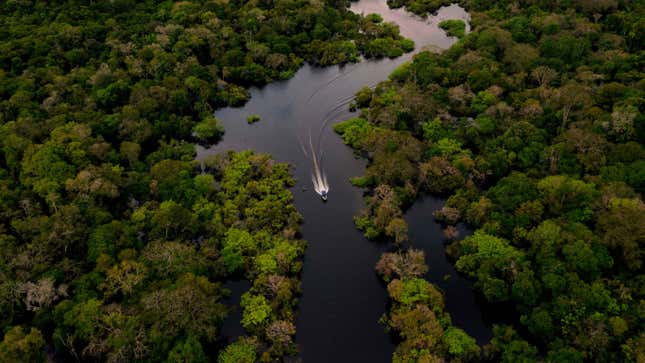
In, um, other news: By taking a different approach to conservation, the world could make biodiversity-renewing projects far more effective at protecting freshwater species, according to a new study in Science focused on areas of the Amazon rainforest.
Bear with me. I know this isn’t nearly as attention-grabbing as the revelation that the president has covid-19. But these new findings are important because they could inform the world’s policies on biodivesity. Right now at the United Nations Convention on Biological Diversity, world leaders are setting countries’ conservation targets for the next 30 years. As leaders make those plans, they should pay particular attention to restoring the planet’s freshwater rivers, wetlands, and lakes, which are threatened by habitat loss and the climate crisis.
Freshwater ecosystems make up less than 1% of the Earth’s surface, yet are home to some 10% of all known species on Earth and a third of all vertebrates. Plus, they play key roles in regulating the planet’s carbon and providing food for people around the world. Despite these essential roles in nature, freshwater ecosystems aren’t really prioritized in biodiversity policy. Instead, policies are designed to prioritize terrestrial ecosystems and species with the assumption that they’ll benefit freshwater systems by extension.
To see if that strategy is working, the report’s researchers analyzed more than 1,500 land-based and marine species in the Amazon rainforest. These species live in 377 localities and 99 forest river channels in Paragominas and Santarém, in Brazil’s Pará state. By running computer simulations of various conservation efforts, they could see how each responded.
Turns out for freshwater, the currently existing strategy isn’t great. Land-focused conservation efforts provided an average of just 22% of the freshwater species-boosting benefits that would be achieved through specifically freshwater-focused conservation planning.
When they modeled jointly-focused efforts which target both land and water ecosystems (what they call “integrated cross-realm planning”), the results for species population sizes went wild. The study shows that with these changes to prioritize conservation of freshwater systems, it was possible to see benefits to freshwater species population levels that were 600% higher, and at the expense of just a 1% decrease in benefits to land-based species on average. Plus, these integrated strategies would cost the same amount as the land-specific ones, according to the paper.
This makes sense, because of course, land and water ecosystems are connected. In the Amazon, many terrestrial species drink and eat from freshwater lakes and streams, and rely on the those water bodies to supply nutrients to the rainforest’s rich foliage.
Though the study focused on the Amazon in particular, the authors said their findings could inform biodiversity-saving policies everywhere, because freshwater bodies aren’t just under threat in Brazil. Because of habitat loss from agriculture and other human activities, as well as the climate crisis, freshwater vertebrate populations have dropped by about 80% over the past 40 years, which is more than twice the decline of marine and land vertebrate populations. So it’s high time we start giving them the attention they deserve in conservation plans.